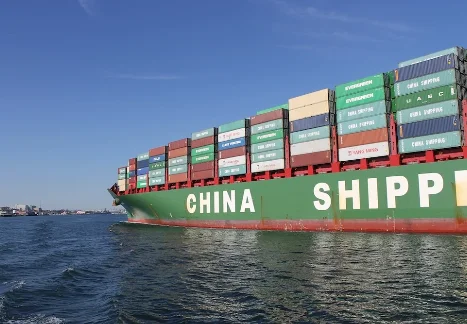The Strategic Importance of China-US Trade Corridor Management
The China-US trade route represents both tremendous opportunity and significant complexity, characterized by fluctuating demand patterns, regulatory changes, and evolving market dynamics. Successful navigation of this corridor requires more than just transportation—it demands strategic management of the entire logistics ecosystem. GOOD approaches this challenge with a holistic perspective that considers every element of the supply chain, from raw material sourcing to final delivery. The company's logistics experts maintain constant vigilance over trade policy developments, port operations, carrier performance, and market trends, allowing them to provide clients with strategic guidance that goes beyond simple transportation. This comprehensive approach enables businesses to make informed decisions about inventory management, production planning, and distribution strategies, transforming their logistics operations from a cost center into a value-generating component of their business model. By understanding the intricate connections between manufacturing schedules, shipping options, and market demands, GOOD helps clients optimize their supply chains for maximum efficiency and resilience.
Technology Integration: The Digital Foundation of Modern Shipping
At the core of GOOD's freight superiority lies a sophisticated digital ecosystem that transforms traditional shipping into intelligent logistics. The company has developed a proprietary technology platform that integrates data from multiple sources—including carriers, ports, airports, and customs authorities—to create a unified view of the supply chain. This platform provides clients with real-time visibility into shipment status, predictive analytics for estimated arrival times, and automated alerts for potential issues. Artificial intelligence algorithms optimize mode selection, routing decisions, and capacity planning based on cost, speed, and reliability metrics. The system also automates documentation processes, reducing errors and accelerating customs clearance. For clients, this technological capability translates into unprecedented control and transparency, with customizable dashboards, automated reporting, and data-driven insights that support better decision making. Beyond operational efficiency, GOOD's technology platform also facilitates sustainability initiatives by calculating carbon emissions for each shipment and identifying opportunities for optimization. This digital transformation represents a fundamental shift in how freight services are delivered and experienced, moving from reactive transportation to proactive supply chain management.

Sustainability and Future-Readiness: Leading the Evolution of Global Freight
As global trade continues to evolve, GOOD is positioned at the forefront of industry trends and innovations that will shape the future of freight services. The company has made significant investments in sustainable logistics practices, including optimized routing to reduce fuel consumption, partnerships with carriers using cleaner technologies, and carbon offset programs for client shipments. GOOD is also exploring emerging technologies such as blockchain for enhanced security and transparency, electric and autonomous vehicles for ground transportation, and advanced data analytics for predictive logistics management. The company's commitment to innovation extends to its people and processes, with continuous training programs ensuring that their team remains expert in the latest logistics methodologies and technologies. This future-ready approach ensures that GOOD's clients benefit not just from today's best practices but from tomorrow's innovations, maintaining a competitive advantage in an increasingly complex global marketplace. By balancing operational excellence with environmental responsibility and technological innovation, GOOD is helping to define the future of trans-Pacific shipping while delivering exceptional value to businesses on both sides of the ocean.

 Good
Good
 Jul 08 2025
Jul 08 2025


 Home
Home





 Email:
Email:
 Address: 216, Building A1, Fuhai Industrial Zone, Fuyong Community, Fuyong Street, Baoan District, Shenzhen, China
Address: 216, Building A1, Fuhai Industrial Zone, Fuyong Community, Fuyong Street, Baoan District, Shenzhen, China



